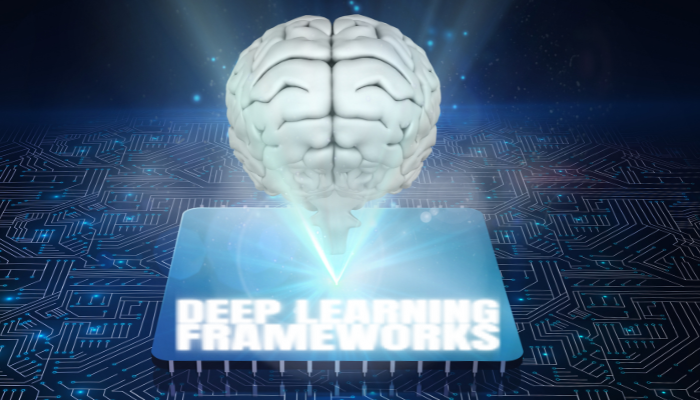A Simple Guide to the Best Tools for AI Projects This Year
Why Machine Learning Frameworks Matter
Machine learning is changing the way we build technology — from apps that recommend songs to tools that detect fraud. But behind every smart AI model is a solid framework doing the heavy lifting.
Think of frameworks as the toolbox for ML developers. They help you build, train, and fine-tune models without having to code everything from scratch.
Whether you’re just starting out or already working in the field, knowing which frameworks to focus on in 2025 can save you time and improve your projects.
Let’s Keep It Simple: What’s a Framework?
A machine learning framework is basically a library or platform that helps you:
- Train your AI models faster
- Handle large amounts of data
- Work with neural networks, decision trees, and more
- Save your code time with reusable tools
Instead of building everything from zero, you grab a framework and start building right away.
Top Machine Learning Frameworks to Learn in 2025

Here’s a breakdown of the top ML frameworks you should explore this year — with a quick description of what each does best.
1. TensorFlow – Google’s Power Tool for Deep Learning
Great for: Big AI models, production-ready apps, mobile AI
TensorFlow is one of the most popular ML tools out there. Created by Google, it’s trusted by companies that need scalable solutions. It supports everything from voice assistants to healthcare diagnostics.
Why it’s useful:
- Works well for advanced deep learning
- Can run models on phones or in the cloud
- Backed by Google and has tons of tutorials
- Keras (a beginner-friendly API) is built into it
Use case: Making an app that reads X-rays to detect illnesses.
2. PyTorch – Researcher’s Favorite, Loved by Developers
Great for: Flexibility, experiments, building models from scratch
PyTorch, made by Meta (Facebook), is very flexible and perfect for testing ideas fast. It’s used by researchers, students, and developers who want more control over how their models work.
Why people love it:
- Easy to write and debug code
- Supports GPUs out of the box
- Feels like regular Python
- Excellent for building custom models
Use case: Building a chatbot that understands sarcasm (not easy!).
3. Scikit-learn – Clean and Simple for Beginners
Great for: Traditional machine learning models (like regression or classification)
Scikit-learn is a great first step into ML. If you’re working with spreadsheets or CSV files and want to make predictions — this is your go-to.
Why it’s a favorite:
- Super easy to learn
- Great documentation
- Works well with NumPy and pandas
- Perfect for testing new ideas
Use case: Predicting whether an email is spam or not.
4. Keras – Deep Learning Made Easy
Great for: Beginners starting with deep learning
Keras sits on top of TensorFlow and makes building neural networks a breeze. It turns complex model code into just a few simple lines.
Why people choose it:
- Minimal code, maximum results
- Perfect for quick tests and prototypes
- Helps you learn deep learning basics without the headache
Use case: Creating an image recognition app to spot dog breeds.
5. XGBoost – Fast and Accurate for Structured Data

Great for: Competitions, business data, financial models
If you’ve ever seen someone win a Kaggle contest, they probably used XGBoost. It’s built for speed and accuracy, especially on tables or business data.
Why it’s powerful:
- Handles missing values
- Blazing fast
- Delivers top results for prediction tasks
- Used widely in industries like banking and insurance
Use case: Predicting which customers are likely to churn.
6. LightGBM – Speedy Alternative to XGBoost
Great for: Big data and faster model training
LightGBM, developed by Microsoft, is like a turbo-charged cousin of XGBoost. It’s designed to handle huge amounts of data fast — without using tons of memory.
Why people like it:
- Much faster on large datasets
- Less memory usage
- Can handle different types of data easily
Use case: Forecasting product sales in an e-commerce store.
7. Hugging Face Transformers – Best for NLP and LLMs
Great for: Working with language models like BERT, GPT, T5
This framework makes it super easy to tap into the power of large pre-trained models. Hugging Face has become the go-to for natural language processing (NLP) tasks.
Why it’s a game-changer:
- Offers ready-to-use models
- Great for translation, summarization, chatbots
- Huge community and resources
- Just plug in and play
Use case: Building a resume-scanning tool that finds the best candidate matches.
8. JAX – Fast, Functional, and Built for Research
Great for: High-performance ML and advanced projects
JAX is still gaining ground, but it’s already big in academic circles. It combines the feel of NumPy with super-speed and flexibility. Great for researchers trying to push the boundaries.
Why it’s rising fast:
- Lightning-fast computations
- Automatic gradients
- Perfect for experimental models
Use case: Testing custom reinforcement learning models in simulated environments.
At a Glance: Which One Should You Choose?
| Framework | Best For | Skill Level | Speed |
| TensorFlow | Scalable deep learning | Intermediate | High |
| PyTorch | Flexible research and custom work | Beginner+ | High |
| Scikit-learn | Simple ML projects | Beginner | Medium |
| Keras | Learning deep learning basics | Beginner | Medium |
| XGBoost | Business and predictive analytics | Intermediate | Very High |
| LightGBM | Big datasets, fast results | Intermediate | Very High |
| Transformers | NLP tasks and LLMs | Intermediate+ | Medium |
| JAX | Research-grade ML | Advanced | Very High |
Final Thoughts

If you’re starting out, try Scikit-learn or Keras — they’re great for learning and quick wins.
Want to dive deeper? Go with PyTorch or TensorFlow, especially for deep learning.
For data-heavy projects, XGBoost and LightGBM will give you solid results.
And if you’re into language models or LLMs, there’s no better place than Hugging Face.
Machine learning is growing fast, and these frameworks are the tools that power it. Learning even one or two of them can open doors to amazing opportunities — whether you’re in tech, finance, healthcare, or education.
Frequently Asked Questions (FAQ)
1. What are machine learning frameworks?
Answer:
Machine learning frameworks are tools or libraries that help developers build, train, and deploy ML models more easily. Instead of writing every algorithm from scratch, you can use pre-built functions, models, and workflows.
2. Which machine learning framework is best for beginners?
Answer:
For beginners, Scikit-learn is a great choice for traditional models like regression or classification. If you want to try deep learning, start with Keras — it’s simple and beginner-friendly.
3. Should I learn TensorFlow or PyTorch in 2025?
Answer:
Both are excellent choices. TensorFlow is widely used in production and enterprise-level projects, while PyTorch is preferred in research and academia for its flexibility. Choose based on your project needs or career goals.
4. Is Scikit-learn still relevant in 2025?
Answer:
Yes! Scikit-learn is still one of the best tools for classical machine learning. It’s perfect for structured data and great for rapid prototyping or learning the basics.
5. What’s the difference between XGBoost and LightGBM?
Answer:
Both are gradient boosting frameworks. XGBoost is slightly more popular and has been around longer, while LightGBM is faster and uses less memory — especially useful for large datasets.
6. Which framework should I use for Natural Language Processing (NLP)?
Answer:
Use Hugging Face Transformers for NLP tasks like text generation, translation, or chatbots. It gives access to powerful pre-trained models like GPT, BERT, and T5.
7. What is JAX and who should use it?
Answer:
JAX is a newer framework ideal for high-performance machine learning and research. It’s best for advanced users who need fast math operations and custom model experimentation.
8. Do I need to know Python to use these frameworks?
Answer:
Yes, most top machine learning frameworks — including TensorFlow, PyTorch, and Scikit-learn — are built for Python. Knowing Python is essential to get started in ML.
9. Are these frameworks free to use?

Answer:
Absolutely. All the frameworks mentioned (TensorFlow, PyTorch, Scikit-learn, etc.) are open-source and free to use for personal and professional projects.
10. Can I use these frameworks without a GPU?
Answer:
Yes, you can run most ML frameworks on a CPU. However, training large models (especially in deep learning) will be much faster with a GPU.
